Osteochondrosis cervical disease is a disease of the spine, in which occur degenerative changes of the intervertebral discs. At the first stage of development, the symptoms are almost imperceptible, but the spread of the disease, the patient's condition deteriorates.
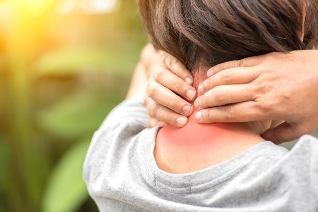
The causes of the disease
Osteochondrosis occurs as a result of a load on the spine. The triggering factors:
- a physical activity;
- the footwear is unsuitable;
- the malnutrition;
- the problem with the metabolic processes;
- nervous and emotional exhaustion.
The disease may occur during the time of gestation of the child. A big risk in case of a multiple pregnancy. The process of the disease can be genetically conditioned.
The stage of development and the photo
The development of the degenerative disease of the disc occurs slowly. There are 4 main phases to the disease:
- As a first step. The patient feels a discomfort in the long walk and stay in the same position. Begin to form the seals in the vertebrate disks.
- In the second step. You are experiencing the pain. The doctor prescribed a manual therapy and pain relievers.
- The third step. There is expressed by degenerative changes of the intervertebral discs.
- The fourth stage. The final step in the development of the disease, in which astonished to see virtually all services of the vertebral column.
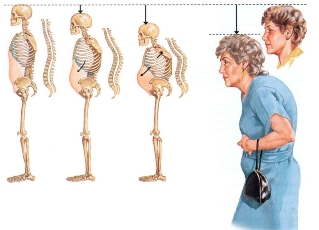
The last phase of the conservative therapy will be ineffective. The doctor prescribes the required response, which will require a long recovery period.
Total symptomatology
Osteochondrosis may include one or more departments of the vertebral column. The affected more often than the cervical vertebrae. The clinical symptoms of this rejection, directly related to the action of the brain. Let's look at the main symptoms of this disease.
Pain in the nape of the neck and the region
Patients often have pain in the neck, the nape of the neck and the region. This occurs because of the lack of blood supply in the departments of the brain. The deformation of the vertebrae results in compression of the vertebral artery. In the midst of these degenerative processes can occur from the hernia.
With painful sensations risk of serious complications. For example, dysfunctions in the blood pressure or persistent disorders, hearing and sight. Sometimes, in patients with panic attacks and anxiety. They can last from 30 minutes. This condition is called diencephalic syndrome.
Another cause of the pain – the spasm of the muscles, which leads to a decreased blood circulation. The patient may temporarily lose the ability to move the neck. A strong power surge caused the pain in the neck begin to circulate in the nape of the neck, and can spread on the head. The result of these processes, the patient suffers from severe migraines.
The noise, the ringing, feeling of fullness in the ears
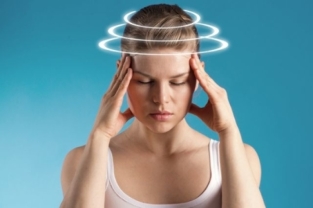
Such a set of symptoms called or cochlear implants. The doctors can't always link the gaps with the development of cervical osteoarthritis.
The noise and the tinnitus occurs during a change of position or grip extended in the same position.
Vertigo
The vertebrae of the cervical spine, not quite thin, so if you hold the head, they are exposed to a high load. They are more exposed to deformation as the vertebrae in the chest. As a result, differences occur dizziness, which can be:
- System. There is a feeling of circular movement of the body and surrounding objects. It occurs because of a failure of the vestibular apparatus, muscles, and receptors in the joints.
- Not of system. The patient, there is a feeling of weakness, dizziness, and uncertain of the state in the vertical position. The feel of machinery of spin is missing.
If you encounter such a symptom, you should immediately consult a physician. The reasons for the emergency hospitalization of a patient:
- the numbness of the part of the shoulder;
- the paralysis of the muscles of the face;
- loss of consciousness;
- headaches.
Shifted the vertebrae and the muscles that spasm leads to interference to the nerves that supply the brain. Due to a lack of oxygen arise of dizziness. Initially, the lack of oxygen occurs in the part occipital of the head, because it is the centre of the vestibular apparatus.
The lack of air
The lack of air, low back pain can be of several types: breathing problems and a lack of oxygen. The breathing is hampered on the bottom of the crushing of the nerves that transmit signals from the throat to the esophagus.
The lack of air occurs due to the crush of the nerve. The result is a spasm of the diaphragm, which faces a change of the depth and pace of breathing. The patient becomes suffocating and difficult to breathe.

It is a symptom, such as dyspnea osteochondrosis is dangerous development a number of other complications. In this case, the doctor prescribes a drug treatment.
The nausea
Cervical most sensitive, as in its structure, there are a large number of nerve fibres and blood vessels. Through the neck of passes of the artery through which passes the oxygen and nutrients in the brain. When osteochondrosis cervical form the parish priest and hernias.
To the rear of the structures of the brain receives an insufficient quantity of arterial blood. This triggers a mechanism of compensatory response. The narrowing of the arteries unite their efforts led to an increase in the blood pressure. The patient has the feeling of nausea.
If not restoring the flow of blood to the back brain structures, the patient is vomiting and loss of consciousness. A prolonged rupture of the cerebral circulation facing the development of the stroke, and the pursuit of a disability.
Vision problems
Osteochondrosis of the neck of the patient may occur diplopia, midges and glitter. They reflect the beginning of serious diseases that appear on the background of degenerative disc disease. Among them, the following diseases:
- glaucoma;
- cataract;
- the disease of Claude Bernard-Horner.
It is very important to follow the evolution of the state of the eye. It is an important symptom, that is indicative of a health problem.
Horse racing in the blood pressure
First, one might think that the horse racing of the blood pressure and lower back pain have nothing to do. However, this is not the case. When degenerative changes of the spine affecting the autonomic nervous system of the man.
Horse racing is observed in the course of the day. For such a disease is not a characteristic of long-term high blood pressure.
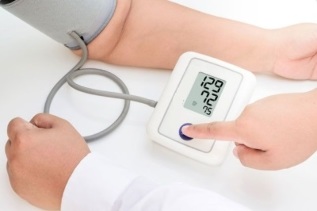
Index daily dynamics uretralnoe of high blood pressure occurs when the reflex irritation of the nerve endings and spasms transient krovenosnyh vessels blood.
The symptoms of increased blood pressure during osteochondrosis cervical:
- strong headaches.
- the pressure peaks after muscle stress surges;
- the sensation of pain in the extremities: hands, feet, etc;
- the lowest sensitivity in the region.
Sudden fainting, or the state syncopal
Sudden fainting may occur because of the short duration of the cessation of the blood stream of a vertebrate board of trustees of the arteries. If the patient has lost consciousness, it is necessary to throw, with the feet above the head. This activates the blood flow to the brain. After the syncope may occur problems with speech and movement.
Pharynx problems
Sometimes, the appearance of degenerative processes in the cervical vertebrae, can testify only to pharynx the symptoms. They manifest themselves by:
- difficulty swallowing;
- a tickle in the throat;
- the sensation of a foreign body in the throat;
- the itching.
These signs are associated with injuries, neuro-vascular trunks that go along with spinal cord. However, these symptoms are observed not only low back pain, but the inflammation and swelling.
The elevation of the body temperature
When osteochondrosis cervical increases the temperature of the body. This symptom occurs when the following injuries:
- the syndrome of the vertebral artery;
- protrusion of the disk;
- stenosis of the spinal canal.
The Increase of the temperature of the body can be induced neurosis, neurological zabolevaniem and fibromyalgics chikungunya. Sometimes, there are several pathological conditions, which are the symptoms of degenerative disc disease.
The events, which depend on the stage of the disease

- The first phase of development of the disease the symptoms may not be observed. The first signs of the onset of degenerative processes: a headache, a slight limitation of the motor activity of neck, headache, discomfort in the neck and arms. These signs of economic expressed in the curves or slopes of the head.
- In a second phase of development begins protrusion of the spinal discs, the cracks are starting to tighten. The pain becomes more pronounced, you get tinnitus, and sleep disorders.
- The third step is different from the destruction of the fibrotic ring in the disk. You have dislocations and displacement of the vertebrae herniation in the cervical region.
- The fourth stage of most of the degenerative changes are irreversible.
What occur in the brain?
The symptoms in the brain can be pronounced or minimal. Crbraux spreads only produce a strong tightening of the vertebral artery bony internal develop. The result of this, you are experiencing problems with the access of blood in the brain, and this causes spasms of the small blood vessels and dysfunction of the hypothalamus.
When osteochondrosis cervical can occur the syndromes of the following:
- Hypothalamic. It may be neurological and physical.
- Syncope and drop-tail. They appear in the fact that the patient feels weakness in the legs and loses consciousness for a few minutes.
- Vestibular-the stem cell. There is vertigo in the corners of the head.
The result of these degenerative processes, the patient seeks to avoid public places. By doing this, he fears, and depression.
The differences women and men
The symptoms of whiplash chondrosis in men and women identical. Degenerative changes in the cervical vertebrae are more common in women, this can be explained by the anatomical structure of the cervical spine. In men cervical muscles developed better.
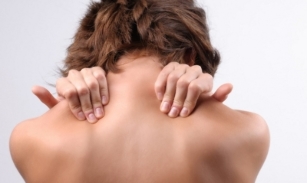
Chondrosis of the vertebral column in children and adolescents
Chondrosis of the vertebral column in children and teenagers occurs due to the overall latency of development of the connective tissue. This may be due to the genetic abnormality or a disorder of the metabolism of phosphate. Little developed the intervertebral discs are vulnerable to different pathological processes.
The disease occurs due to the inactivity of prolonged sitting at the computer and the availability of excess weight. The symptoms of this disease are similar to the manifestation of degenerative disc disease in adults. When the defeat of the cervical spine in one patient, the pain in the neck, dizziness and headaches.
The diagnosis
Before the diagnosis and the prescription of treatment, the doctor performs a number of diagnostic tests. Conducted by the inspection evaluates the posture and examines the state of the muscles.
Ct
The tomography allows to see the bones in the 3D projection. According to the principle, this procedure is similar to the x-ray. However, such a diagnosis allows you to see layer-by-layer image.
This procedure relates to children and pregnant women, because there's a high dose of x-rays Among the contra-indications are the absence of the ability of the patient to remain motionless for a few minutes.
X-rays
Classical x-ray procedure, which is named for the diagnosis of degenerative disease of the disc. It is virtually harmless and allows you to evaluate the degree of degeneration. Using this method, you can identify the disease at an early stage.
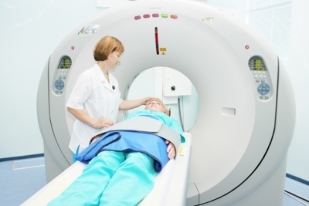
X-rays do not give the possibility to obtain the superposition of the images of the affected tissue. There are a number of more modern and informative methods of investigation. The x-ray is only suitable for the primary diagnosis.
Osteochondrosis is a dangerous disease that without timely treatment can lead to irreversible degenerative changes and disability. At the initial stage can be only a slight discomfort. To measure the evolution of the pathological process symptoms becomes more intense. At the onset of the first signs of lesions of the spine, you should immediately consult a physician.
































